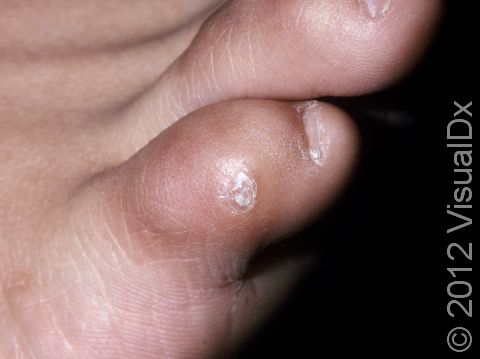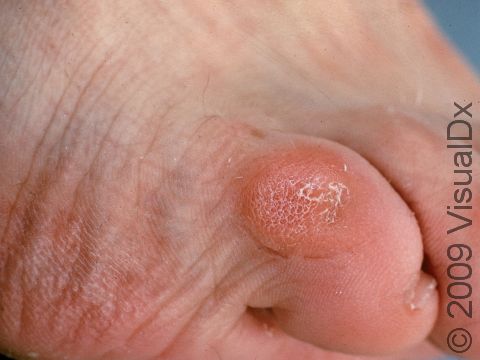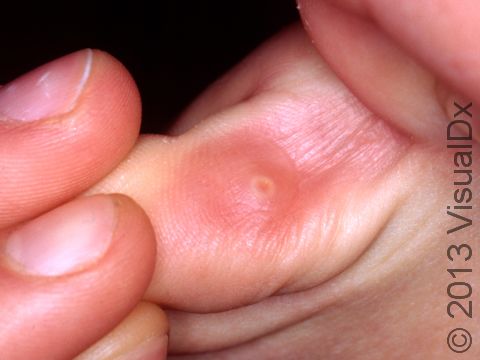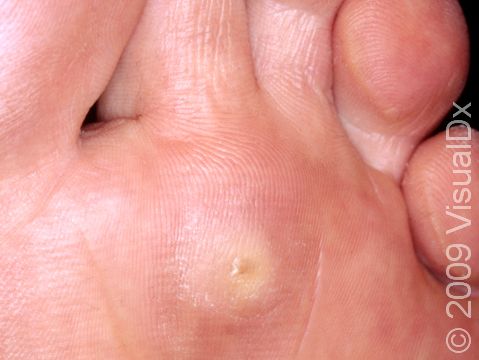Corn
Corns, like calluses, are thickened overgrowths of skin that occur where the skin is under pressure. While a callus generally spreads over a large area, a corn typically looks smaller from the surface but can extend deep into the skin in a cone-like shape; the point of the cone in the skin can be uncomfortable. People experience 2 kinds of corns: hard corns, which occur on the surface or tops of the toes, and soft corns, which occur between the toes. Both kinds of corns can be painful, and both are caused by increased pressure from poorly fitting shoes or other repeated pressure on the toes. Corns can be improved by wearing shoes that fit properly and by following a regimen of creams, soaks, and scraping down of the toughened skin. Rarely, a person will have to see a doctor or podiatrist to have a corn cut away.
Who's At Risk?
Anyone of any age (with the exception of babies who have not yet started walking) can develop corns. They are more common in people whose shoes do not fit well or who are on their feet walking or running a lot.
Signs & Symptoms
Corns are primarily located on the feet, particularly the toes. However, corns can appear anywhere that foot friction occurs, whether it is on top of the foot or even on the sole.
In the case of soft corns, well-defined thickening of the skin may be seen on the toes, and soft bumps may be noted between the toes. Hard corns typically affect the tops of the toes or the side of the fifth toe, and appear like calluses.
Self-Care Guidelines
To best prevent corns, make sure that shoes fit properly.
Treatments
Your physician may advise you to soak corns in warm water and file them down with an emery board or pumice stone. Over-the-counter salicylic acid plasters may be recommended for treatment, as well as keratolytic agents (such as urea cream) to help soften the thickened skin.
Visit Urgency
Corns are a benign condition and may not require medical evaluation. However, if corns become very painful, evaluation should be sought.
People with certain medical conditions, such as diabetes or connective tissue disease, have an increased risk of complications associated with corns, and they should seek medical evaluation.
References
Bolognia, Jean L., ed. Dermatology, pp.1399. New York: Mosby, 2003.
Freedberg, Irwin M., ed. Fitzpatrick’s Dermatology in General Medicine. 6th ed, pp.1247-1249. New York: McGraw-Hill, 2003.
Last modified on August 16th, 2022 at 2:45 pm

Not sure what to look for?
Try our new Rash and Skin Condition Finder



